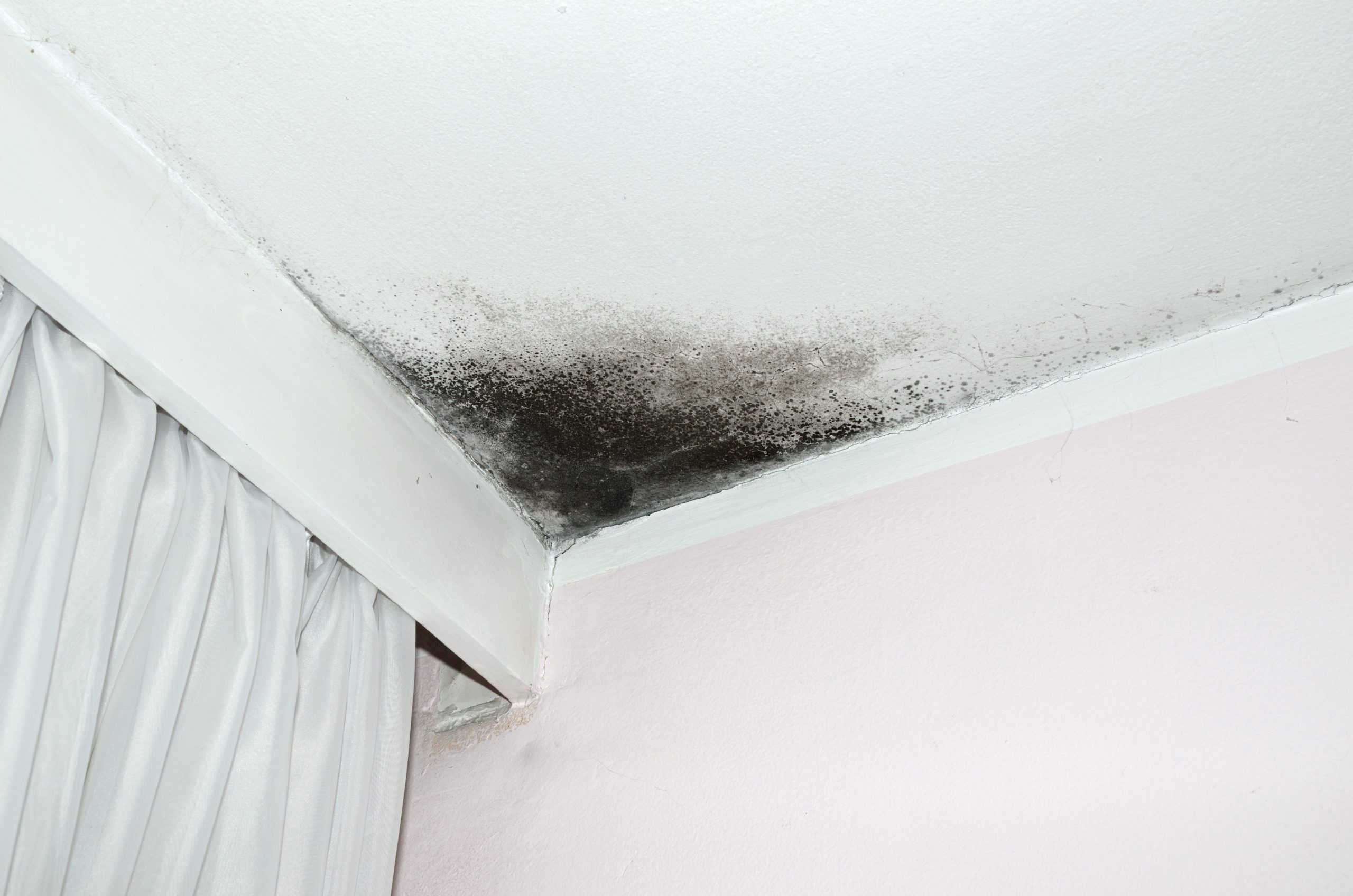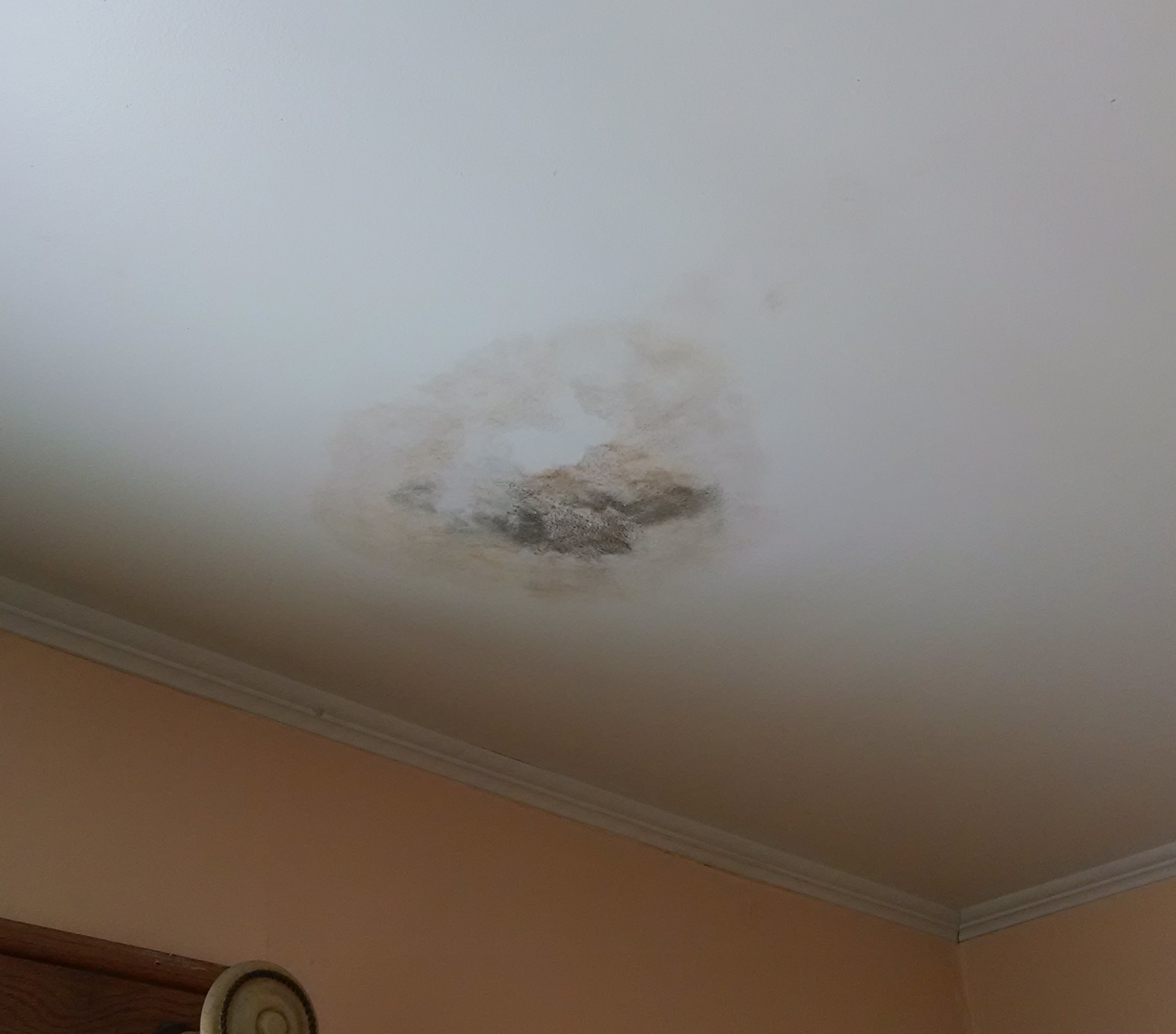Understanding Mold Growth
Mold is a common problem in homes, especially in humid climates like Surabaya. It can grow in various places, but the corner of a bedroom ceiling is a prime location due to its unique conditions.
Conditions Favoring Mold Growth
Mold thrives in damp, dark, and warm environments. The corner of a bedroom ceiling often meets these criteria. Here’s why:
* Moisture Accumulation: The corner of a ceiling is a common spot for moisture to accumulate, especially if there’s a leak or poor ventilation.
* Lack of Sunlight: Corners often receive less sunlight than other areas of a room, making them ideal for mold growth.
* Warm Temperatures: Bedroom ceilings can get warm, especially during the day, creating an environment conducive to mold growth.
Common Types of Mold, Mold in corner of bedroom ceiling
Several types of mold can be found in homes. Some common ones include:
* Cladosporium: This black or brown mold is common in homes and is often found on walls and ceilings. It can cause allergies and respiratory problems.
* Aspergillus: This greenish-gray mold can cause lung infections and allergies. It is often found in damp areas, such as bathrooms and kitchens.
* Penicillium: This blue-green mold is commonly found on damp surfaces, such as wood and fabrics. It can cause allergies and respiratory problems.
Moisture Accumulation in Corners
Moisture can accumulate in the corner of a bedroom ceiling due to several factors:
* Leaks: Leaks from the roof, plumbing, or windows can lead to moisture accumulation in the ceiling.
* Condensation: Warm, moist air can condense on cold surfaces, such as the corner of a ceiling, especially during the humid Surabaya season.
* Poor Ventilation: Poor ventilation can trap moisture in the air, leading to condensation and mold growth.
* Improper Insulation: Insufficient or damaged insulation can allow moisture to penetrate the ceiling.
* High Humidity: Surabaya’s high humidity levels can contribute to moisture accumulation and mold growth.
Identifying and Assessing Mold: Mold In Corner Of Bedroom Ceiling

Mold growth in your bedroom can be a real bummer, especially when it appears in unexpected places like the corner of your ceiling. It’s important to know what you’re dealing with before you start any cleaning or repairs.
Visual Inspection
Identifying mold visually is the first step in assessing the problem. Here’s how to inspect the corner of your bedroom ceiling:
- Turn on the lights and make sure the area is well-lit. This will help you see any discoloration or growth more clearly.
- Look for any signs of water damage. This could include water stains, peeling paint, or warped ceiling tiles. Mold often grows in areas that have been exposed to moisture.
- Check for any discoloration. Mold can be a variety of colors, including black, white, green, and even pink. It can also appear as a fuzzy or powdery substance.
- Look for any unusual smells. Mold can have a musty or earthy odor. If you smell anything unusual, it’s a good sign that there might be mold present.
Types of Mold
Knowing the type of mold you’re dealing with is crucial for determining the appropriate treatment and understanding potential health risks.
| Mold Type | Appearance | Health Risks | Treatment Options |
|---|---|---|---|
| Black Mold (Stachybotrys chartarum) | Dark green or black, often slimy or fuzzy | Can cause respiratory problems, allergies, and even neurological issues. | Professional mold remediation is recommended. |
| Alternaria | Dark green or brown, often velvety | Can trigger allergies and asthma, especially in individuals with pre-existing respiratory conditions. | Cleaning with bleach solution or a mold-killing spray. |
| Cladosporium | Black or brown, often powdery | Can cause allergies, asthma, and skin irritation. | Cleaning with bleach solution or a mold-killing spray. |
| Aspergillus | Green, yellow, or brown, often fuzzy | Can cause lung infections, particularly in individuals with weakened immune systems. | Professional mold remediation is recommended. |
Professional Mold Inspection and Testing
While a visual inspection can give you a general idea of whether mold is present, it’s not always accurate. A professional mold inspector can use specialized equipment to identify and assess the extent of mold growth.
Professional mold testing is crucial for determining the type of mold present, its concentration, and the potential health risks.
Self-diagnosis can be dangerous. Mold can be harmful, and you might not be able to identify all types of mold or their severity without proper training and equipment. A professional mold inspector can help you understand the extent of the problem and develop a safe and effective remediation plan.
Addressing Mold Issues

So, you’ve got some mold creeping up on your ceiling, huh? Not cool, bro. It’s time to kick that mold to the curb and get your bedroom back in tip-top shape.
Mold Removal Methods
Mold removal is all about getting rid of that nasty stuff and preventing it from coming back. Here’s the lowdown on how to do it:
Cleaning Mold
Before you start cleaning, make sure you’re rocking some safety gear like gloves and a mask to protect yourself from those mold spores. Now, let’s get this party started:
- Start with a mild solution of bleach and water. Mix it up in a spray bottle and go to town on that moldy spot. Remember, bleach can be a bit of a hardcore dude, so test it out on a small area first to make sure it doesn’t mess up your ceiling paint.
- If the mold is stubborn, you can use a commercial mold remover. Just follow the instructions on the bottle, and don’t forget to ventilate the room while you’re working.
- Scrub, scrub, scrub! Use a stiff-bristled brush to scrub the moldy area thoroughly. Don’t be afraid to get your hands dirty, bro.
- Rinse the area with clean water. Make sure you get rid of all that bleach and mold remover.
Drying the Area
After you’ve cleaned the mold, it’s important to dry the area completely. Mold loves moisture, so you gotta make sure it’s dry to prevent it from coming back. Here’s how to do it:
- Open up the windows and doors. Let the fresh air flow through and dry out the room.
- Use a fan to speed up the drying process. Point it at the moldy area and let it blow for a while.
- If you’ve got a dehumidifier, crank it up! This will help remove moisture from the air and prevent mold from growing.
Sealing the Area
Once the area is dry, you’ll want to seal it to prevent future mold growth. This is like putting a shield up against those mold spores.
- Use a sealant specifically designed for mold prevention. You can find it at most hardware stores.
- Apply the sealant to the cleaned and dried area. Follow the instructions on the product label.
- Let the sealant dry completely before you move on. You don’t want to mess it up, bro.
Preventing Future Mold Growth
No one wants to deal with mold again, right? So, it’s time to take some preventative measures to keep it at bay.
Ventilation
Ventilation is like giving your bedroom a breath of fresh air. It helps remove moisture and prevent mold from growing.
- Open your windows and doors regularly. This will help air out your room and keep it fresh.
- Use a fan to circulate the air. Even if you don’t have a dehumidifier, a fan can help move the air around and prevent moisture from building up.
- Make sure your bathroom and kitchen are well-ventilated. These are the areas where moisture tends to build up, so good ventilation is key.
Humidity Control
Humidity is like the moisture level in your room, and mold loves a good humidity party. Keep it low to keep the mold away.
- Use a dehumidifier. This is a super effective way to remove moisture from the air and prevent mold growth.
- Avoid using humidifiers. These things can actually increase the humidity in your room, which can make it a breeding ground for mold.
- Dry your laundry outdoors whenever possible. This will help prevent moisture from building up inside your home.
Addressing Moisture Sources
Mold loves to party where there’s moisture, so it’s important to address any leaks or moisture sources in your home.
- Fix any leaks immediately. This includes leaky pipes, faucets, and roofs.
- Ventilate areas that are prone to moisture buildup. This includes bathrooms, kitchens, and basements.
- Keep your gutters clean. Clogged gutters can cause water to back up and leak into your home, which can lead to mold growth.
Maintaining a Healthy Indoor Environment
Mold isn’t just a bedroom problem, it can be a whole house thing. So, it’s important to keep your whole home clean and dry to prevent mold growth.
- Clean your home regularly. This includes dusting, vacuuming, and mopping.
- Wipe down surfaces that are prone to moisture buildup. This includes sinks, showers, and tubs.
- Ventilate your home regularly. Open your windows and doors to let in fresh air.
